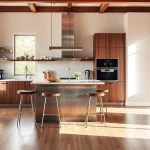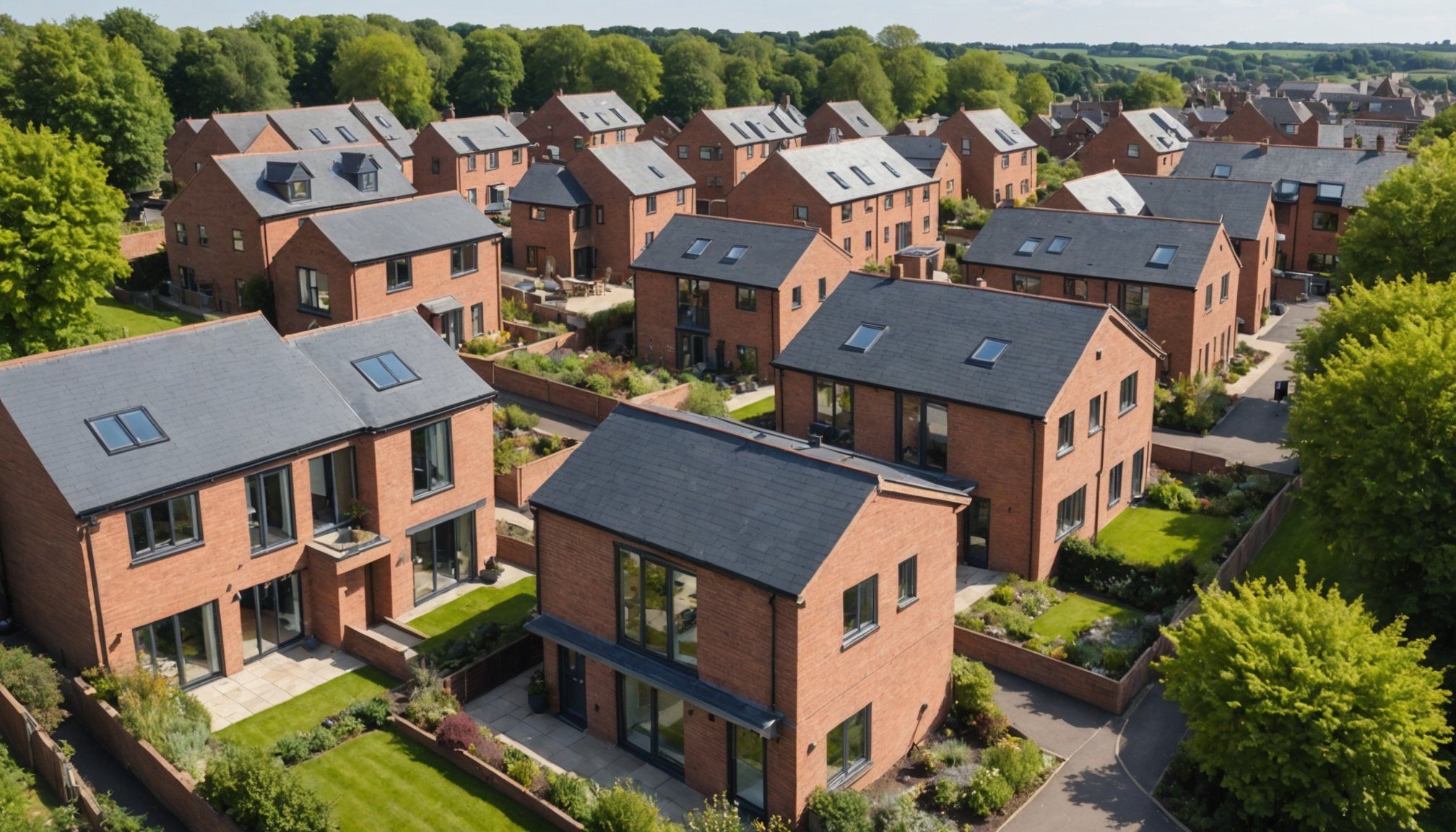Key Recent Trends in UK Home Design
Recent UK home trends reveal a clear shift toward openness and flexibility. Homeowners increasingly embrace open-plan layouts, breaking down walls to create spacious, interconnected living areas. This trend supports contemporary lifestyles by allowing natural light to flow and fostering social interaction, making spaces feel larger and more inviting.
Modern UK homes also prioritize multi-functional spaces. Rooms are no longer single-purpose; kitchens double as workstations, and lounges transform into gyms or playrooms. This adaptability reflects changing lifestyles, especially with more people working remotely and balancing family life at home.
Also to discover : How are UK architects responding to urban living demands?
Contemporary interior design in the UK favors clean lines, neutral palettes, and natural materials, enhancing the sense of calm and order. Minimalist aesthetics mesh well with the open, airy layouts, emphasizing functionality without sacrificing style.
Lifestyle changes, such as increased remote work and wellness focus, have driven these trends. UK home trends now center on creating environments that are both practical and enriching, responding directly to residents’ evolving needs.
Also read : How are housing prices changing in the UK market?
Sustainability and Eco-Friendly Innovations
Sustainable home design UK has surged as homeowners increasingly prioritize eco-friendly materials and energy efficiency. Green architecture blends aesthetics with environmental responsibility, using resources that minimize carbon footprints without sacrificing style or functionality.
The UK government’s policies incentivize adopting renewable energy sources and sustainable building practices, encouraging builders and homeowners to shift towards greener choices. Public awareness campaigns highlight the benefits of eco-friendly living, making energy-efficient boilers, solar panels, and recycled insulation materials more accessible and appealing.
Long-term, the impact of sustainability on home design will be profound. Future homes will likely incorporate smart energy management systems alongside passive heating and cooling technologies, significantly reducing environmental impact. This evolution reflects a shift from merely functional residences to regenerative spaces that contribute positively to the ecosystem.
By embracing sustainable home design UK principles, the construction industry is pioneering solutions that meet today’s environmental challenges and prepare us for a more resilient, eco-conscious future. This holistic approach ensures durability, cost savings, and healthier living environments.
Integration of Smart Technology in Living Spaces
Smart homes UK are rapidly evolving as home automation becomes commonplace in both new builds and renovations. The integration of connected living solutions creates environments that respond intuitively to homeowners’ needs. Devices like smart thermostats, lighting, and security systems communicate seamlessly through central hubs, enhancing convenience and energy efficiency.
Connectivity plays a pivotal role in modern UK homes, enabling real-time control and monitoring via smartphones or voice assistants. This integration supports not only comfort but also remote management, essential for busy lifestyles.
Looking ahead, anticipated advancements in AI and IoT devices promise more personalised and adaptive living spaces. These technologies will further streamline daily tasks, optimize energy use, and increase security, transforming the concept of home automation from convenience to necessity. As smart homes UK continue to expand, homeowners will benefit from greater control, efficiency, and a more connected lifestyle.
Evolving Needs and Multi-Functional Spaces
The rise of flexible living UK reflects a fundamental shift in how homes are used today. Increasingly, spaces must serve multiple purposes to accommodate diverse activities. The COVID-19 pandemic accelerated this trend, as people sought adaptable spaces that function as home offices, gyms, or leisure zones without compromising comfort or style.
Demand for dedicated home offices has surged, with many households requiring quiet, ergonomic work areas that blend seamlessly into living environments. Beyond work, rooms that convert for exercise or entertainment represent a new priority, highlighting the value of multifunctionality. These shifts are particularly notable in urban areas where space is limited, prompting creativity in design.
Understanding evolving lifestyles is crucial for architects and homeowners alike. Future home layouts must be versatile, fostering environments that adapt to changing needs. By embracing flexible living UK concepts, residents can improve quality of life while maximizing space efficiency. This adaptability ensures homes remain relevant, comfortable, and functional for years to come.
The UK’s Architectural Heritage and Future Design Inspiration
Exploring the fusion of past and future in home design
The UK architectural innovation landscape is renowned for its unique blend of tradition and modernity. Historical British architecture—from Tudor timber frames to Georgian symmetry—continues to influence future home aesthetics profoundly. Designers draw on classic elements like sash windows and stone facades while integrating cutting-edge technologies and sustainable materials.
Blending heritage features with innovative solutions creates homes that honor the past yet meet contemporary needs. For example, many new constructions preserve exposed beams or original brickwork, pairing them with energy-efficient glazing and smart home systems. This fusion extends beyond aesthetics; it reflects a commitment to sustainability, leveraging the UK’s historical respect for craftsmanship alongside modern building techniques.
Contemporary builds inspired by the UK’s architectural legacy showcase this blend vividly. Projects incorporating solar panels or green roofs within traditional frameworks demonstrate how UK architectural innovation embraces environmental responsibility without sacrificing style. Such homes stand as testaments to evolving design that respects history while pioneering future trends.
Societal Shifts Shaping the Future of UK Living Spaces
As urbanisation UK accelerates, housing demands are rapidly evolving. The growing movement towards city centres means more people seek efficient, smaller living spaces. This trend is reinforced by demographic shifts such as an ageing population and younger generations delaying traditional family formation, resulting in diversified household types.
The remote work impact is particularly transformative. With more individuals working from home, the need for adaptable living environments has risen sharply. Homes must now accommodate dedicated workspaces while balancing comfort and functionality. This shift encourages the proliferation of flexible layouts and multi-use rooms that can serve both personal and professional needs.
Demographic trends also encourage the rise of co-living spaces. These offer affordability and social connections in high-demand urban areas, appealing to millennials and transient workers alike. Such spaces often feature shared amenities to maximise value, blending privacy with community.
Ultimately, future UK living spaces will reflect these combined influences, prioritising adaptability, affordability, and connection—key factors driven by demographic trends, urbanisation UK, and the remote work impact.
Understanding Precision and Recall in SQuAD Evaluation
Precision and recall are crucial metrics in evaluating models using the Stanford Question Answering Dataset (SQuAD).
Precision measures the accuracy of the tokens predicted by the model. Specifically, it is the ratio of correctly predicted tokens (true positives, tp) to the sum of true positives and falsely predicted tokens (false positives, fp). The formula is:
Precision tp / (tp + fp)
Recall, on the other hand, evaluates how many tokens from the correct answer were captured by the model. It calculates the ratio of true positives to the sum of true positives and missed tokens (false negatives, fn):
Recall tp / (tp + fn)
Here, tp represents tokens shared between the model’s answer and the correct response, fp includes extra tokens in the prediction not present in the answer, and fn counts tokens in the correct answer missing from the prediction.
Understanding these metrics helps developers improve model performance by balancing precision and recall, ensuring answers are both accurate and comprehensive.







